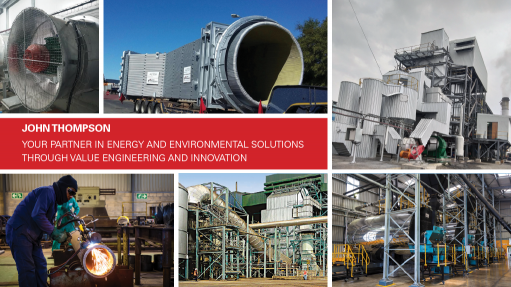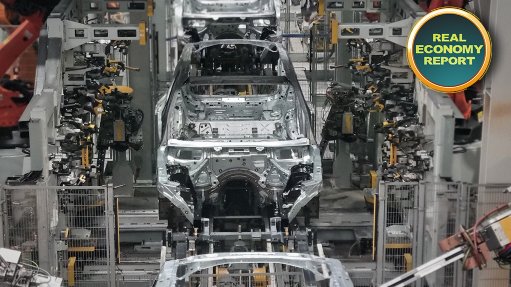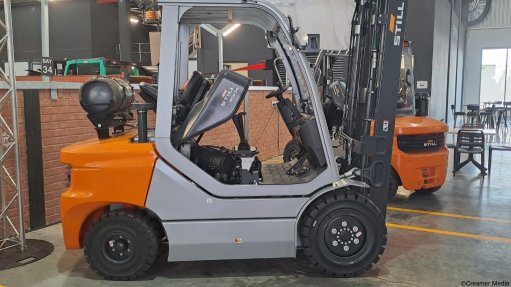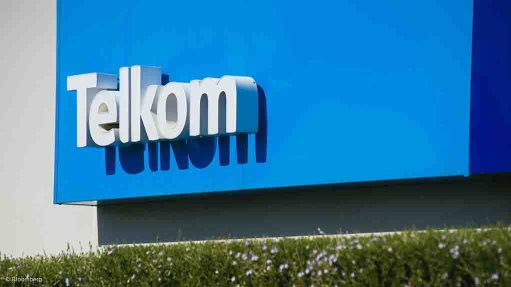How much does your factory depend on memory?
By SYSPRO Africa Senior Vice President: International Sales Johan du Toit
“There is no such thing as a smart factory, just automated factories supported by smart systems.” – Pieter van Schalkwyk (XMPro)
It seems we just cannot shake the reference to “smart” factories in the modern manufacturing world. Everywhere you turn, there are new systems and equipment being pushed to make the factory smarter and in today’s fast-paced and ever-evolving manufacturing landscape, anything that can improve operational excellence must be considered.
If we assign the human characteristic of intelligence to a factory, one can argue that factories traditionally relied on “memory” to achieve operational excellence. In fact, management desperately relies on this memory, as the factory is expected to run without continuous instruction.
In a smart factory, systems and technology are used to override the memory of the factory, providing a continuous cycle of interpreting real-time data feedback, optimised decision-making, and direct real-time operational instructions. This can only be achieved through the integration of several key pillars that together create a cohesive, intelligent ecosystem.
Assimilate, interpret and decide
At the heart of the automated cycle lies artificial intelligence (AI) which powers data-driven decision-making. An AI engine can analyse the vast quantities of real-time data from the factory floor, providing real-time insights that enable proactive decision-making. Factories depend on AI to assimilate data from more sources than a human being can absorb, interpret this data and decide on the best path forward. This decision is either communicated as a suggestion to a human being, or immediately executed, in the so-called “dark” factory.
A typical example in manufacturing is predictive maintenance. By analysing patterns and identifying anomalies in equipment behaviour, AI can forecast maintenance needs, preventing costly breakdowns and minimising downtime. AI can optimise production schedules, balancing workloads and improving resource allocation. It is only with AI that systems can replace the wizened supervisor’s insightful, “The last time it made that noise we had to….”
Decisions are continuously improved by interpreting more and more data and autonomously learning and adjusting the resulting instruction. This is commonly referred to as machine learning (ML), the cornerstone of most AI applications.
Connectivity and Real-time Insights
When I started my career 30 years ago, I was working as an engineer on a power plant. At that time there was a control room, with control and information panels lining one side of a 40 m by 40 m room. There was a gauge or warning light for every component, from temperature, pressure and vibration. In fact, there was a whole instrumentation department, that was solely focussed on maintaining the control instruments, for an operator to take in as much data as possible, about the condition of every machine in the plant.
Today the instrumentation department is almost wholly focussed on getting the same feedback, and much more, but converted into a continuous data stream, to not only be presented on a computer screen, but to be submitted as continuous real time data for interpretation by an AI engine.
What About the Customer?
I think every operational manager or factory supervisor would agree that it is easy to optimise factory efficiency, if you just ignore the customer. But unfortunately, this is a luxury none of us can afford. The factory remains connected to the outside world through buying and sales transactions, and today this is still the domain of the Enterprise Resource Planning (ERP) solution. The ERP is the custodian of all transactional data and dates, crucial in determining the eventual success and profitability of the manufacturing organisation.
The Benefits to Manufacturers are Lasting
In this digital age where we must adapt to continuous change, no manufacturer can rely on the “memory” of the factory any longer. At a business level more and more managers are insisting seeing the data before any decision is made. With AI, this philosophy is expanded to the factory floor, where millions of data elements must be interpreted per second, and the right decision is made consistently. This improves efficiency and productivity, enabling the factory to remain competitive.
“A short pencil is much better than a long memory,” said agricultural scientist Professor Jan Bonsma, and we all know that systems have replaced the pencil!
Article Enquiry
Email Article
Save Article
Feedback
To advertise email advertising@creamermedia.co.za or click here
Comments
Press Office
Announcements
What's On
Subscribe to improve your user experience...
Option 1 (equivalent of R125 a month):
Receive a weekly copy of Creamer Media's Engineering News & Mining Weekly magazine
(print copy for those in South Africa and e-magazine for those outside of South Africa)
Receive daily email newsletters
Access to full search results
Access archive of magazine back copies
Access to Projects in Progress
Access to ONE Research Report of your choice in PDF format
Option 2 (equivalent of R375 a month):
All benefits from Option 1
PLUS
Access to Creamer Media's Research Channel Africa for ALL Research Reports, in PDF format, on various industrial and mining sectors
including Electricity; Water; Energy Transition; Hydrogen; Roads, Rail and Ports; Coal; Gold; Platinum; Battery Metals; etc.
Already a subscriber?
Forgotten your password?
Receive weekly copy of Creamer Media's Engineering News & Mining Weekly magazine (print copy for those in South Africa and e-magazine for those outside of South Africa)
➕
Recieve daily email newsletters
➕
Access to full search results
➕
Access archive of magazine back copies
➕
Access to Projects in Progress
➕
Access to ONE Research Report of your choice in PDF format
RESEARCH CHANNEL AFRICA
R4500 (equivalent of R375 a month)
SUBSCRIBEAll benefits from Option 1
➕
Access to Creamer Media's Research Channel Africa for ALL Research Reports on various industrial and mining sectors, in PDF format, including on:
Electricity
➕
Water
➕
Energy Transition
➕
Hydrogen
➕
Roads, Rail and Ports
➕
Coal
➕
Gold
➕
Platinum
➕
Battery Metals
➕
etc.
Receive all benefits from Option 1 or Option 2 delivered to numerous people at your company
➕
Multiple User names and Passwords for simultaneous log-ins
➕
Intranet integration access to all in your organisation




















